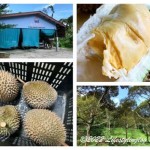Cat-Safe Houseplants and Flowers: A Guide for Feline-Friendly Homes
Maintaining a harmonious living space that accommodates both the aesthetic appeal of houseplants and the safety of feline companions requires careful consideration. Many common houseplants contain toxins that, when ingested, can cause a range of adverse reactions in cats. Therefore, selecting non-toxic alternatives is paramount for responsible pet ownership. This article provides a comprehensive list of cat-safe houseplants and flowers, along with guidance on maintaining a plant-filled home that minimizes risks to feline health.
Understanding Plant Toxicity in Cats
The physiological processes of cats differ significantly from those of humans, rendering them susceptible to certain plant toxins that are harmless to people. Plant toxicity in cats results from the presence of various chemical compounds within the plant's leaves, stems, flowers, or roots. These compounds can cause a variety of symptoms, ranging from mild gastrointestinal upset to severe organ damage. The severity of the reaction depends on several factors, including the type and amount of plant ingested, the cat's size and overall health, and its individual sensitivity.
Common symptoms of plant poisoning in cats include vomiting, diarrhea, excessive drooling, loss of appetite, lethargy, skin irritation, difficulty breathing, tremors, seizures, and even coma. In severe cases, ingestion of highly toxic plants can be fatal. It is crucial to be vigilant about the plants present in a cat's environment and to seek immediate veterinary attention if a cat exhibits any signs of plant poisoning. Resources such as the ASPCA Animal Poison Control Center (APCC) can provide valuable information and guidance in cases of suspected poisoning.
Preventing plant ingestion is the most effective way to protect cats from the harmful effects of toxic plants. This involves identifying potentially harmful plants, removing them from the home, or restricting access to them. Choosing cat-safe alternatives allows plant enthusiasts to enjoy the beauty of indoor greenery without compromising the health and well-being of their feline companions.
Recommended Cat-Safe Houseplants
Numerous houseplants pose no threat to cats, offering a wide range of options for creating a vibrant and safe indoor environment. The following list highlights some of the most popular and readily available cat-safe houseplants:
African Violet (Saintpaulia): These flowering plants are known for their vibrant colors and relatively low maintenance requirements. They thrive in bright, indirect light and can add a touch of beauty to any room without posing a threat to curious cats.
Areca Palm (Dypsis lutescens): This palm is non-toxic to cats and can provide a sense of lushness to indoor spaces. It prefers bright, indirect light and well-draining soil.
Bamboo Palm (Chamaedorea seifrizii): Similar to the areca palm, the bamboo palm is also safe for cats and offers an elegant aesthetic. It is relatively easy to care for and can tolerate lower light conditions.
Cast Iron Plant (Aspidistra elatior): As its name suggests, the cast iron plant is incredibly resilient and can tolerate neglect, making it an excellent choice for beginners. It is non-toxic to cats and thrives in low-light conditions.
Christmas Cactus (Schlumbergera bridgesii): Despite its association with the holiday season, the Christmas cactus is safe for cats. It produces beautiful, colorful blooms and requires minimal care.
Gloxinia (Sinningia speciosa): This flowering plant boasts vibrant, bell-shaped blossoms and is considered non-toxic to cats. It requires bright, indirect light and well-draining soil.
Haworthia (Haworthia): These small, succulent plants are safe for cats and come in a variety of shapes and sizes. They are relatively low-maintenance and require well-draining soil and bright, indirect light.
Orchid (Orchidaceae): Many orchid varieties are considered non-toxic to cats, including Phalaenopsis orchids, which are among the most commonly available. Orchids add an elegant touch to any home and can thrive with proper care.
Peperomia (Peperomia): This diverse genus includes many cat-safe varieties, such as the Watermelon Peperomia (Peperomia argyreia) and the Baby Rubber Plant (Peperomia obtusifolia). Peperomias are relatively easy to care for and come in a variety of leaf shapes and colors.
Prayer Plant (Maranta leuconeura): These plants are known for their unique foliage that folds up at night, resembling praying hands. They are non-toxic to cats and prefer bright, indirect light and moist soil.
Spider Plant (Chlorophytum comosum): Spider plants are easy to propagate and produce "spiderettes" that dangle from the mother plant. They are non-toxic to cats and thrive in bright, indirect light.
Swedish Ivy (Plectranthus verticillatus): This trailing plant is safe for cats and can be grown in hanging baskets or pots. It prefers bright, indirect light and well-draining soil.
Recommended Cat-Safe Flowers
Similar to houseplants, many flowers are safe for feline companions, allowing individuals to add beauty and color to their homes without risking their pets' health. It is important to note that even with non-toxic flowers, ingestion in large quantities can still cause mild gastrointestinal upset. The following list details several options:
Alstroemeria (Alstroemeria): Also known as Peruvian lilies, these flowers come in a variety of colors and are generally considered safe for cats. The petals are typically the most ingested part, and in large quantities, mild stomach upset can occur.
Gerbera Daisies (Gerbera jamesonii): These vibrant daisies are non-toxic to cats and add a cheerful touch to any room. They come in a wide array of colors and are known for their long-lasting blooms.
Lisianthus (Eustoma grandiflorum): These elegant flowers resemble roses and are considered safe for cats. They come in various colors, including white, pink, purple, and blue.
Roses (Rosa): Most rose varieties are considered non-toxic to cats, although thorns can pose a potential hazard. Removing thorns before displaying roses is recommended to prevent injuries.
Snapdragons (Antirrhinum majus): These unique flowers are known for their distinctive shape and are considered safe for cats. They come in a variety of colors and can add a touch of whimsy to floral arrangements.
Sunflowers (Helianthus annuus): While the seeds of sunflowers can be unsafe, the entire plant itself, including the flower, is non-toxic to cats. These cheerful flowers can brighten up any space and are a safe option for pet owners.
Zinnias (Zinnia elegans): These vibrant, daisy-like flowers are non-toxic to cats and come in a wide range of colors. They are relatively easy to grow and can add a pop of color to indoor or outdoor spaces.
Strategies for Minimizing Risk
Even with cat-safe plants, it is essential to implement strategies to minimize the risk of ingestion and potential harm. Cats are naturally curious and may be tempted to nibble on plants, regardless of their toxicity. Therefore, preventive measures are crucial for safeguarding feline health.
Placement is Key: Placing plants out of reach of cats is a simple yet effective strategy. Utilizing high shelves, hanging baskets, or plant stands can prevent cats from accessing plants. Consider the cat's climbing abilities and placement. Some cats may find ways to reach high places, requiring extra planning.
Physical Barriers: Using physical barriers, such as cloches or terrariums, can also prevent cats from interacting with plants. These barriers create a protective layer around the plants, preventing cats from reaching the foliage. Chicken wire or netting can also cordon of plants. The goal is to discourage access not prevent all access.
Deterrents: Certain scents and textures can deter cats from approaching plants. Citrus scents are generally disliked by cats. Placing citrus peels around plants or spraying a diluted citrus-scented solution (avoiding direct contact with the plant) can discourage cats from approaching. Applying double-sided tape or aluminum foil around the base of the plant can also deter cats due to the unpleasant texture.
Provide Alternatives: Providing cats with alternative sources of enrichment, such as cat grass or catnip, can satisfy their natural urge to nibble on greenery. Cat grass can be easily grown indoors and provides a safe and healthy outlet for cats to indulge their grazing instincts.
Training: Training cats to avoid plants can also be effective, especially when combined with other deterrents. Using positive reinforcement techniques, such as rewarding cats for staying away from plants, can help them learn to associate plants with negative consequences. Consistently redirecting the cat's attention when it approaches plants is valuable. A firm "no" can get the message across.
Choose the Right Pot: Consider the size and weight of the pot. Ensure the pot is stable and will not topple over if the cat brushes against it. Heavy ceramic or stone pots are often more stable than lightweight plastic ones.
Be Vigilant: Regularly inspect plants for signs of damage or ingestion. If a cat exhibits any symptoms of plant poisoning, seek immediate veterinary attention and bring a sample of the plant for identification purposes.
By implementing these strategies, individuals can create a plant-filled home that is both aesthetically pleasing and safe for their feline companions. Responsible pet ownership involves being mindful of the potential hazards that plants can pose and taking proactive steps to mitigate those risks.

18 Cat Friendly House Plants Bbc Gardeners World

21 Indoor Plants Safe For Cats And Dogs Paisley

Cat Safe Plants Non Toxic For Cats Bouqs Blog

The Best Pet Safe Non Toxic Plants To Gift This Spring Sill

15 Pet Friendly Indoor Houseplants Safe For Cats And Dogs

Best Pet Friendly Plants For A Green And Safe Home

10 Best Cat Safe Plants In 2024

Cat Friendly Plants Top 34 Nontoxic Easy Care Varieties Planet Desert

Pet Safe Plants Singapore S 1 Gardening Landscaping Company

13 Low Maintenance Indoor Plants Safe For Cats And Dogs








